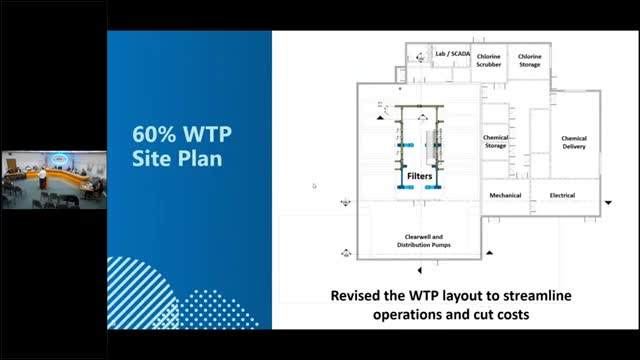City engineers refine water treatment facility design amid rising construction costs
January 22, 2025 | Minnetrista City, Hennepin County, Minnesota
Thanks to Scribe from Workplace AI , all articles about Minnesota are free for you to enjoy throughout 2025!

This article was created by AI using a video recording of the meeting. It summarizes the key points discussed, but for full details and context, please refer to the video of the full meeting. Link to Full Meeting
The city’s engineering team presented a revised layout for the facility, showcasing a more compact design aimed at optimizing functionality while managing expenses. The new footprint, rotated for better access, still promises to deliver the same water volume, but the focus on cost efficiency was evident. “We need it to function in water, and we need it to be as cheap as possible,” one team member emphasized, highlighting the delicate balance between quality and affordability.
The proposed facility is designed to treat water at a capacity of 2,800 gallons per minute, a strategic move to delay the need for additional storage solutions in the future. This foresight is crucial, as the city anticipates a growing demand for water, particularly during peak usage times. The discussions revealed that the current water storage system is nearing its limits, with projections indicating a need for an elevated water tower by 2030. However, the new design could potentially extend that timeline to 2040, providing some financial breathing room for the city.
Yet, the financial implications of the project are daunting. Estimates for the facility's construction have soared to between $26 million and $30 million, a figure that has left council members visibly concerned. The rising costs of materials, particularly concrete, have contributed to this increase, and the team is actively exploring ways to trim expenses without compromising the facility's effectiveness.
As the council deliberated, the specter of rising water rates loomed large. With approximately 2,400 water accounts in the city, the potential for significant rate hikes to cover the costs of the new facility sparked anxiety among officials. “This will shoot us up to be among the top water rates in the region,” one council member noted, underscoring the need for a sustainable financial strategy.
To mitigate these challenges, city leaders are looking towards state support, engaging with newly elected representatives to advocate for bonding bills that could provide necessary funding. However, uncertainty remains about whether such financial assistance will materialize, leaving the council to ponder the implications of moving forward without it.
As the meeting drew to a close, the urgency of the discussions resonated throughout the chamber. The city of Minnetrista stands at a crossroads, balancing the immediate need for a reliable water treatment facility against the backdrop of rising costs and potential impacts on residents. The decisions made in the coming months will not only shape the infrastructure of the community but also determine the financial landscape for its residents in the years to come.
Converted from January 22, 2025 Minnetrista City Council Work Session meeting on January 22, 2025
Link to Full Meeting
Comments
View full meeting
This article is based on a recent meeting—watch the full video and explore the complete transcript for deeper insights into the discussion.
View full meeting